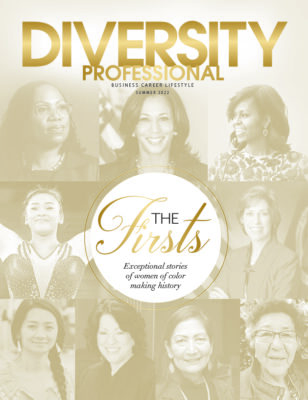FLOWER ARRANGING FOR WORK/LIFE PERFORMANCE
Blooms benefit employee well-being and mental health.
Before Toyotomi Hideyoshi, the Great Unifier of Japan and famous samurai of the 1500s, headed onto the battlefield, he would engage in a ritual you might not expect from a ruthless warrior. Hideyoshi would practice ikebana, an ancient form of flower arranging. In fact, many Japanese military generals and commanders throughout history did the same. They found it calmed their minds, brought them into the present moment and sharpened their decision-making skills, which was all very useful on the battlefield. As it turns out, it’s also useful in the boardroom and in life in general.
A growing number of human resources professionals are discovering the mental and emotional health benefits of DIY flower arranging and other activities that connect people to nature. Whether one is pregaming for a marketing strategy meeting, bonding activity among friends or a romantic date, flower arranging is a fantastic way to calm the mind and relieve stress. And a calm, present, alert mind is a great asset at work or play.
Like meditation, yoga and other corporate wellness activities, flower arranging alleviates stress and reduces cognitive fatigue. In fact, there’s evidence to suggest that flower arranging increases all areas of cognitive performance, especially focus, memory and creativity. While the process of flower arranging is, in and of itself, meditative, creating a finished product out of living things is also a multisensory experience. Flowers are colorful and smell lovely, so being in proximity to them is a mood-booster. Other workplace benefits of the activity include increased productivity, reduced absenteeism, better teamwork, and improved workplace morale. Of course, any corporate wellness activity that benefits people in the workplace also benefits them at home. Going home at the end of the workday in good spirits and with a relaxed mind can impact everything from an employee’s family life to physical health. For these reasons and more, some American companies are now including DIY flower arranging as part of their corporate wellness programs. (In some cases, health insurance providers even cover costs for flower arranging workshops with the same CPT (Current Procedural Terminology) codes used for meditation or art therapy).
Around the world, people are discovering not only flower arranging but other nature-based activities that can help focus the mind and offer physical and mental health benefits. In Canada, doctors now regularly prescribe nature walks in national parks and forests to patients. PaRx, a Canadian initiative founded by physician Dr. Melissa Lem, recommends that people spend at least two hours per week interacting with nature. In the United Kingdom, the National Health Service (NHS) has partnered with the Royal Horticultural Society to develop healing spaces, to introduce people to community gardening.
In the most awe-inspiring recent example of corporate America recognizing the value of nature-bonding, Salesforce’s visionary co-CEO Marc Benioff signed an agreement for a 75-acre California retreat to create a work-and-wellness center for its employees. The resort-style retreat in densely wooded Scotts Valley offers miles of walking trails and is to be used for training and teambuilding events and nature-bonding activities like hiking.
For all those that don’t have easy access to community gardens, secluded forests (or the deep pockets of Salesforce) but understand the value of employee well-being and mental health, DIY flower arranging workshops are an excellent alternative. For in-office and remote employees alike, the practice increases mindfulness and improves both mood and concentration. Human resources professionals looking for new ways to boost their corporate culture, retain employees and increase productivity would be wise to remember this simple Japanese proverb: Happiness is to hold flowers in both hands.









